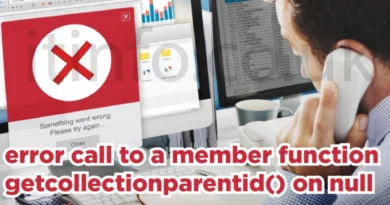Thejavasea.me Leaks AIO-TLP: Insights and Implications
In the digital age, information is one of the most valuable assets. With vast amounts of data being generated every second, securing this data has become increasingly critical. Unfortunately, with the rise in data value, there has been a corresponding increase in data breaches, leaks, and unauthorized access. One of the most recent and significant leaks to catch the attention of the cybersecurity community is the “Thejavasea.me Leaks AIO-TLP.” This article delves into the specifics of the leak, its implications for various stakeholders, and the broader context of cybersecurity in today’s interconnected world.
What is Thejavasea.me?

Before diving into the leak itself, it’s essential to understand what Thejavasea.me is and its role in the online ecosystem. Thejavasea.me is a website that has gained notoriety for being a repository of leaked data, often sharing information that should be confidential or restricted. It operates in the murky waters of the internet, frequently associated with the distribution of sensitive data obtained through questionable or outright illegal means.
The website, like many others of its kind, often flies under the radar, accessible to those who know where to look but not prominently indexed on mainstream search engines. Its primary audience includes hackers, data brokers, and other individuals interested in obtaining sensitive information, either for malicious purposes or for financial gain.
Understanding the AIO-TLP Leaks
The AIO-TLP leaks refer to a significant breach of data that occurred on the Thejavasea.me platform, where vast amounts of sensitive information were compromised. AIO, standing for All-In-One, coupled with TLP (Traffic Light Protocol), typically represents a framework used for sharing information with different levels of sensitivity. The breach exposed confidential data that was meant to be protected under the TLP framework, leading to serious security and privacy concerns.
Traffic Light Protocol (TLP) is a system that categorizes information into different levels of sensitivity, ranging from TLP(highly confidential) to TLP(public information). The AIO-TLP leaks compromised data across various TLP levels, which included personal details, financial records, and potentially classified information. The breach not only undermined the integrity of the TLP system but also highlighted the vulnerabilities in data protection protocols.
The Leak: What Happened?
Thejavasea.me leak of the AIO-TLP was a significant event in the cybersecurity world. The leaked data reportedly contained a vast amount of sensitive information, including details about vulnerabilities, exploits, and possibly even classified government and corporate information. The leak was not just a small breach but a massive release of data that could have far-reaching consequences.
The leak appeared on Thejavasea.me in multiple parts, with each part containing different segments of the AIO-TLP data. The information was quickly downloaded and disseminated across various platforms, including forums, dark web marketplaces, and private networks. This rapid spread made it nearly impossible to contain the leak once it was out, leading to widespread panic among organizations that could be affected.
Insights into the Leaked Data
The leaked AIO-TLP data is believed to contain several types of sensitive information:
- Vulnerability Information: The leak includes detailed descriptions of vulnerabilities in various software and hardware systems. This information is critical because it could be used by malicious actors to exploit these vulnerabilities before they are patched.
- Exploit Code: In addition to vulnerability information, the leak also contains exploit code that could be used to take advantage of these vulnerabilities. This code could be used to create malware, ransomware, or other malicious software.
- Classified Documents: There are reports that the leak includes classified government and corporate documents. These documents could contain strategic information, intellectual property, or other sensitive data that could be damaging if made public.
- User Data: The leak may also include personal information about users, such as usernames, passwords, and other identifying details. This data could be used for identity theft, phishing attacks, or other forms of cybercrime.
Also Read : East County Rednecks GB 2 | Cute:mex-57bk3-e= wallpaper stitch | Bridal:uip4quc45vi=Simple Mehndi Design
Implications for AIO-TLP Organizations
The Thejavasea.me leak of the AIO-TLP has several significant implications for organizations across the globe. The following are some of the key concerns:
- Increased Vulnerability: Organizations are now at increased risk of cyberattacks due to the widespread availability of the leaked vulnerability and exploit information. Malicious actors could use this information to target specific systems, leading to potential breaches, data loss, and financial damage.
- Damage to Reputation: If the leaked data includes classified or sensitive information about an organization, it could lead to severe reputational damage. Customers, partners, and the public may lose trust in the organization’s ability to protect its data.
- Legal and Regulatory Consequences: Depending on the nature of the leaked data, organizations could face legal and regulatory consequences. For example, if personal data is leaked, organizations may be subject to fines and penalties under data protection laws such as the General Data Protection Regulation (GDPR).
- Financial Losses: The financial implications of the leak could be substantial. Organizations may need to invest in additional security measures, incident response, and legal fees. Additionally, if intellectual property is compromised, it could lead to a loss of competitive advantage.
- Operational Disruption: In some cases, the leak could lead to operational disruptions. For example, if critical infrastructure is affected, organizations may need to take systems offline to mitigate the risk, leading to downtime and lost productivity.

Broader Implications for Cybersecurity
The Thejavasea.me leak also has broader implications for the cybersecurity landscape as a whole. It highlights several critical issues that need to be addressed to improve overall security:
- The Need for Better Security Practices: The leak underscores the importance of implementing robust security practices to protect sensitive information. Organizations need to prioritize security and ensure that they have adequate measures in place to prevent data breaches and leaks.
- The Role of Threat Intelligence: The leak demonstrates the value of threat intelligence in identifying and mitigating risks. Organizations should invest in threat intelligence capabilities to stay ahead of potential threats and protect their systems from exploitation.
- Collaboration and Information Sharing: The leak highlights the need for better collaboration and information sharing among organizations. By sharing threat intelligence and working together, organizations can better defend against cyber threats.
- The Importance of Incident Response: The leak also emphasizes the importance of having a robust incident response plan in place. Organizations need to be prepared to respond quickly and effectively to data breaches and leaks to minimize the damage.
- The Evolving Threat Landscape: The leak is a reminder that the threat landscape is constantly evolving. Cybercriminals are becoming increasingly sophisticated, and organizations need to stay vigilant and adapt to new threats.
Mitigating the Impact
While the leak has already occurred, there are several steps that organizations can take to mitigate its impact:
- Conduct a Risk Assessment: Organizations should conduct a thorough risk assessment to determine how the leaked data could impact their operations. This assessment should include identifying potential vulnerabilities and developing a plan to address them.
- Implement Security Patches: Organizations should prioritize the implementation of security patches to address the vulnerabilities identified in the leaked data. This step is crucial to prevent exploitation by malicious actors.
- Strengthen Security Measures: Organizations should review and strengthen their security measures to protect against potential threats. This process may include implementing multi-factor authentication, encrypting sensitive data, and enhancing network security.
- Monitor for Threats: Organizations should continuously monitor their systems for signs of potential threats. This step includes monitoring for unusual activity, suspicious logins, and other indicators of a possible breach.
- Develop an Incident Response Plan: If an organization does not already have an incident response plan in place, it should develop one as soon as possible. The plan should outline the steps to be taken in the event of a data breach or leak, including how to communicate with stakeholders and mitigate the impact.
- Engage with Law Enforcement: If the leaked data includes sensitive or classified information, organizations should engage with law enforcement to investigate the breach and hold those responsible accountable.
The Role of Governments and Regulators
Governments and regulators also have a critical role to play in addressing the implications of the Thejavasea.me leak. There are several steps that they can take to help mitigate the impact and prevent future breaches:
- Enforce Data Protection Laws: Governments should enforce data protection laws to ensure that organizations are held accountable for protecting sensitive information. This enforcement may include imposing fines and penalties on organizations that fail to implement adequate security measures.
- Promote Information Sharing: Governments should encourage information sharing among organizations to help improve cybersecurity. This effort may include establishing forums for sharing threat intelligence and best practices.
- Support Cybersecurity Research: Governments should invest in cybersecurity research to help develop new technologies and strategies for protecting sensitive information. This investment may include funding research initiatives and supporting the development of new tools and techniques.
- Enhance Public Awareness: Governments should work to enhance public awareness of cybersecurity threats and the importance of protecting sensitive information. This effort may include running awareness campaigns and providing resources to help individuals and organizations improve their security practices.
- Strengthen International Cooperation: Given the global nature of cyber threats, governments should work together to strengthen international cooperation on cybersecurity issues. This cooperation may include sharing information, coordinating responses to cyber incidents, and establishing international norms for cybersecurity.
Also Read : Kathleen Nimmo Lynch | SV388 Gold | Transparent:love-k4yboc= roblox
Conclusion
The Thejavasea.me leak of the AIO-TLP is a stark reminder of the ever-present threats in the digital age. As organizations continue to digitize their operations and store vast amounts of data online, the risks associated with data breaches and leaks will only increase. The implications of this particular leak are far-reaching, affecting organizations’ security, reputation, and financial well-being across various sectors.
However, by understanding the nature of the threat, taking proactive measures to mitigate the risks, and fostering a culture of collaboration and information sharing, organizations can better protect themselves against future breaches. Governments and regulators also play a crucial role in this effort, ensuring that appropriate measures are in place to safeguard sensitive information and hold those responsible for breaches accountable.
In conclusion, the Thejavasea.me leak serves as a wake-up call for the global cybersecurity community. It highlights the need for continuous vigilance, improved security practices, and a collaborative approach to addressing the ever-evolving threat landscape. By taking these lessons to heart, we can work together to build a more secure digital future.



